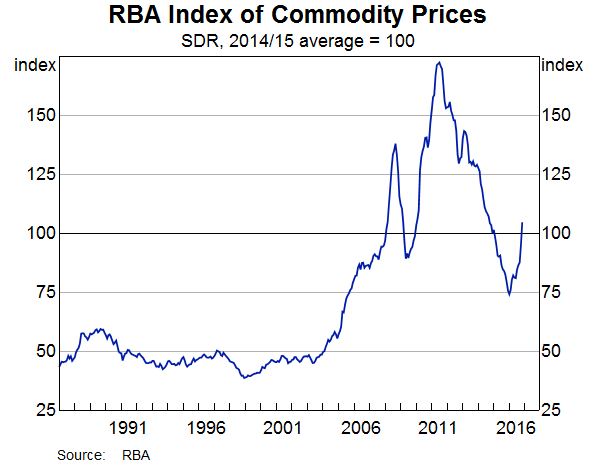As economic activity in the broader economy slows from the June quarter’s 3.3% surge, the trade account is being boosted by the rebound in commodity prices, leading some economists to wonder if this is an example of "Fool’s Gold" – a situation where we could be fooled into thinking the boom is back in force to boost the economy, when in fact it is on its own.
As expected the rebound in our terms of trade continued in November and barring a huge drop this month, we will end 2016 with three consecutive quarters of real growth in our terms of trade – the first time that has happened for more than four years.
But will it be enough to support the rest of the economy as the home building and apartment boom starts turning down, mining investment continues falling, and non-mining investment flatlines, or grows more slowly than expected?
With weak construction spending, sluggish retail sales growth, weakening business credit, slowing growth in the jobs market, there’s very little the surge in commodity pries can do for the foreseeable future except fatten the bottom lines of a string of mining companies.
But the continuing rise in commodity prices – as the RBA’s Commodity price Index shows is good news because it will mean a rise in national income – even if that is a bit of a chimera.

The RBA said yesterday that preliminary estimates for November indicate the index rose by 10.2% in November after the 7.9% rise in September.
The index has increased by 24.0 per cent in Australian dollar terms, according to the RBA yesterday. In the year to September, it was up 7.8%, so the increase in commodities such as coal, iron ore, copper, lead, zinc and tin in November, plus a weakening in the value of the Aussie dollar, sent the index soaring last month.
The RBA said that the index increased by 10.2% last month from October in SDR (a special currency for central banks) terms, after increasing by 8.4% in October (revised down from 9.5%).
"The increase was led by the prices of coking coal and iron ore. The base metals subindex increased in the month, while the rural subindex was little changed,” The RBA said.
"Over the past year, the index has increased by 32.1 per cent in SDR terms (16% in the year to September), led by higher coking coal and iron ore prices, the bank said yesterday in a statement.
"Consistent with previous releases, preliminary estimates for iron ore, coking coal, thermal coal and LNG export prices are being used for the most recent months, based on market information. Using spot prices for the bulk commodities, the index rose by 15.6 per cent in November in SDR terms, to be 61.9 per cent higher over the past year.”
For October, the bank said “Using spot prices for the bulk commodities, the index rose by 10.1 per cent in October in SDR terms, to be 34.2 per cent higher over the past year.”
Commodity prices are booming, but at the moment, nothing else in the Australian economy is.













